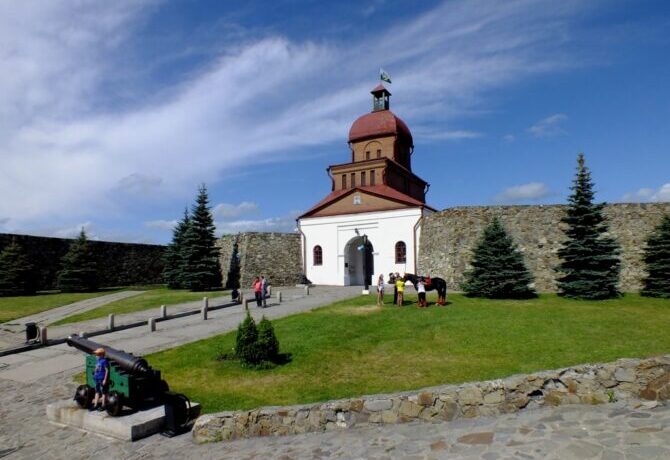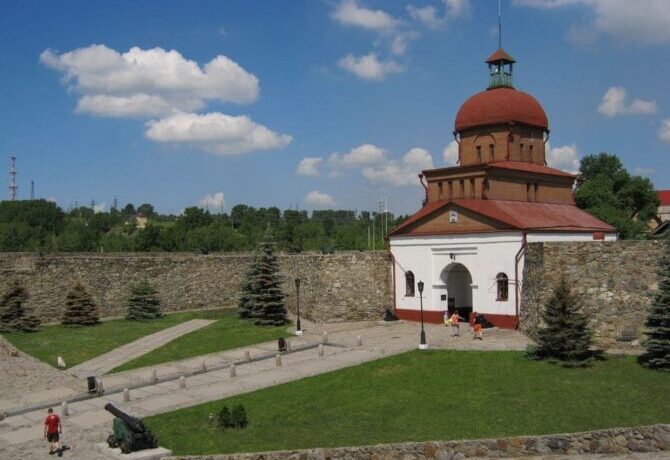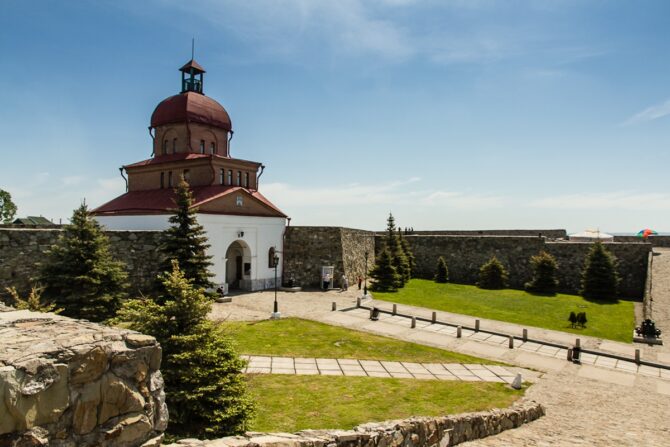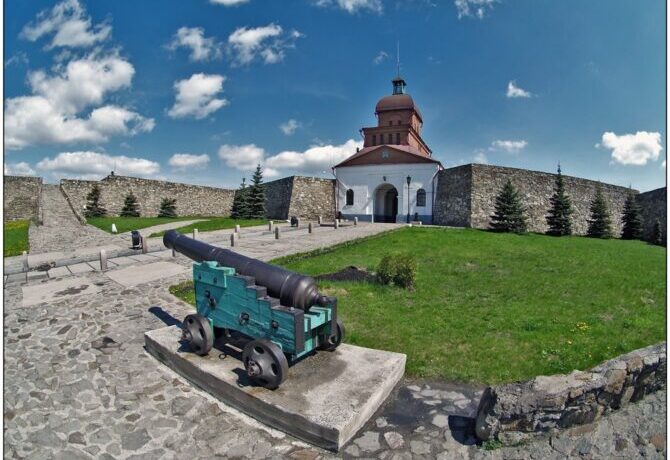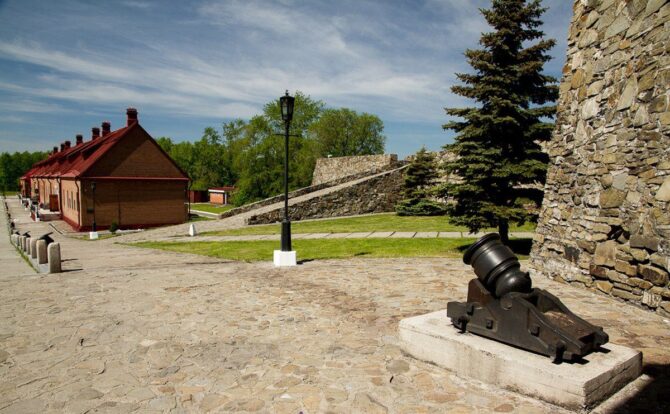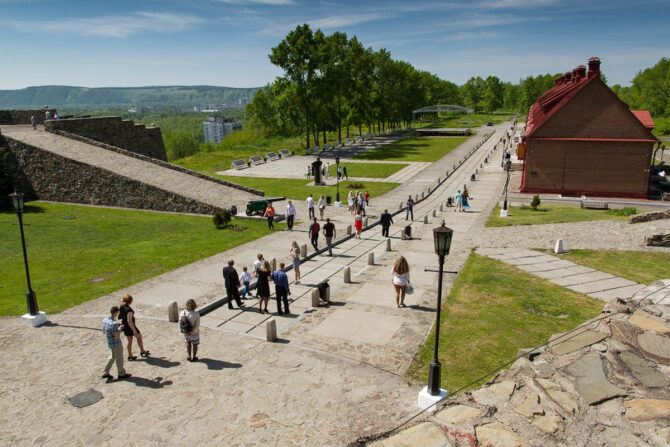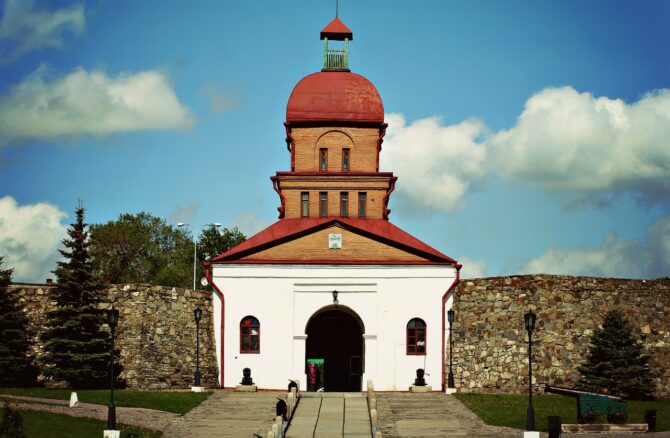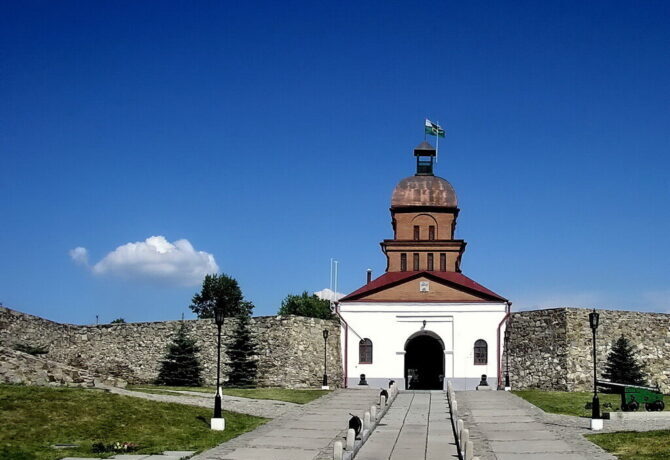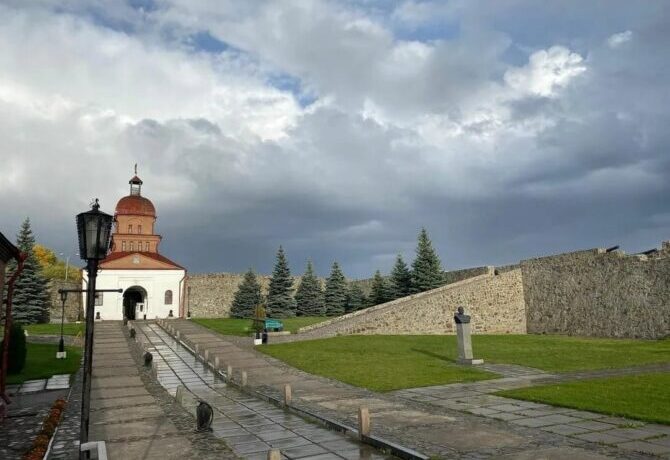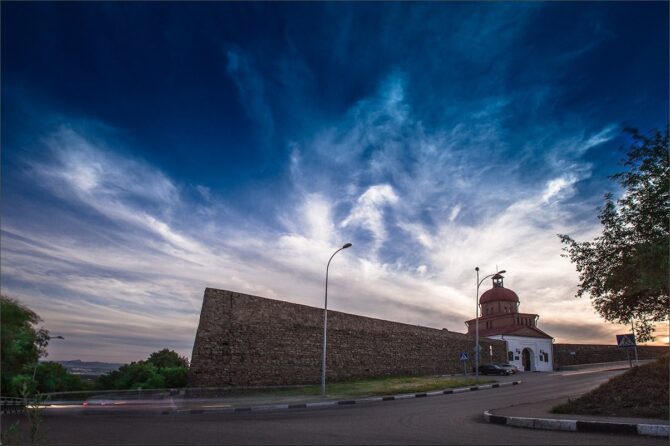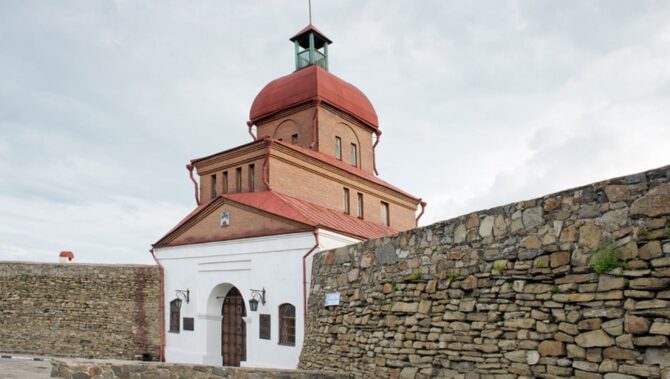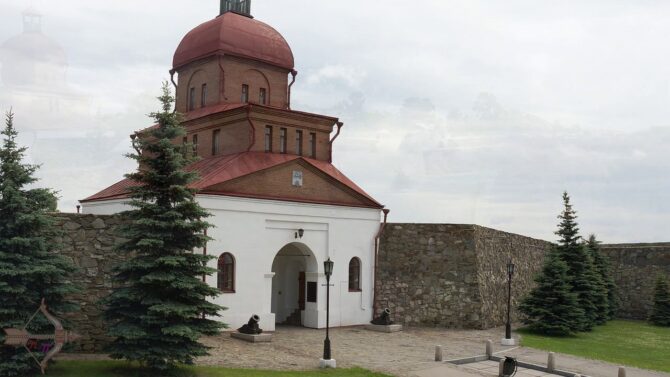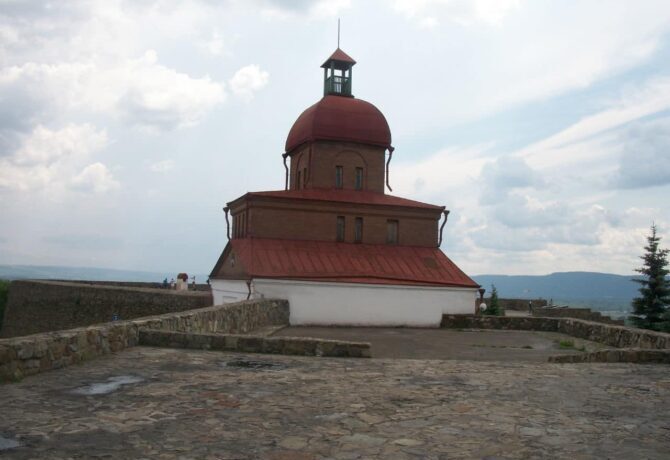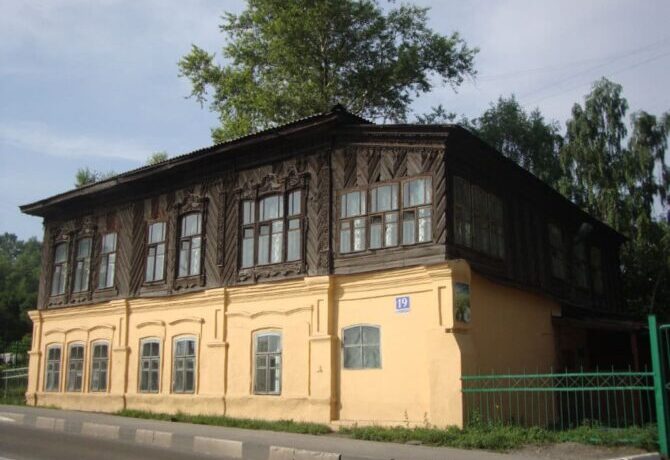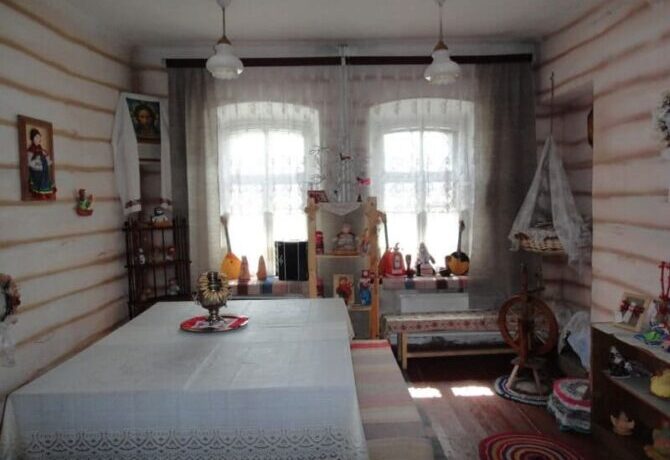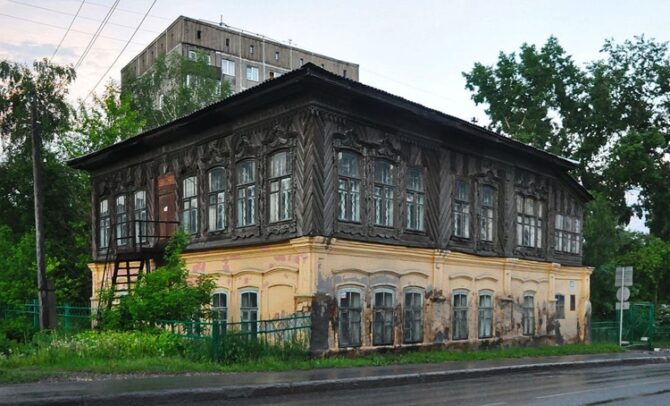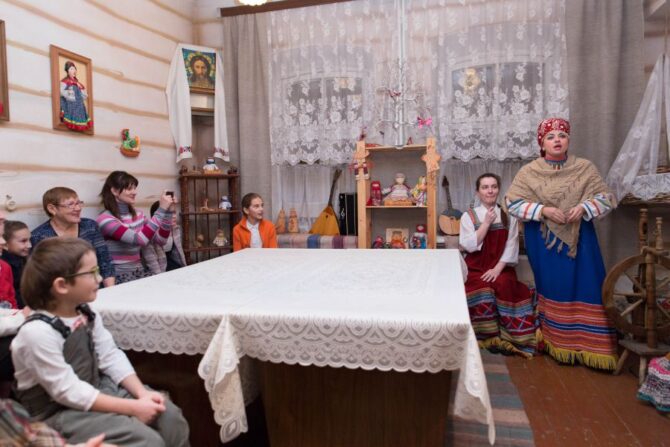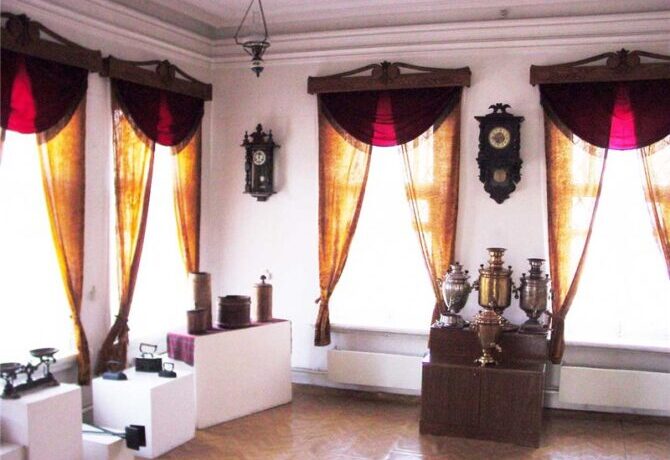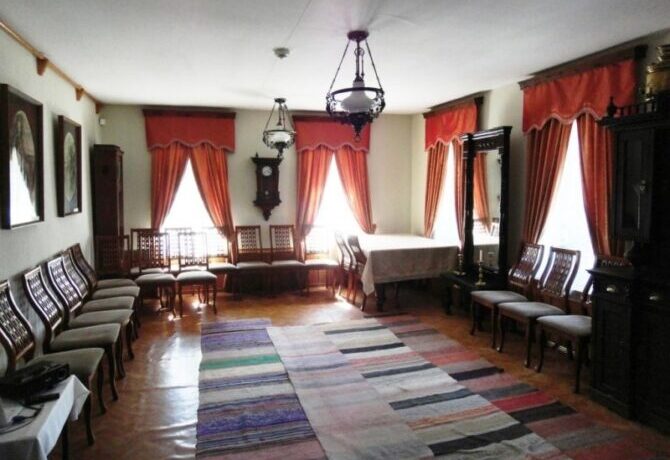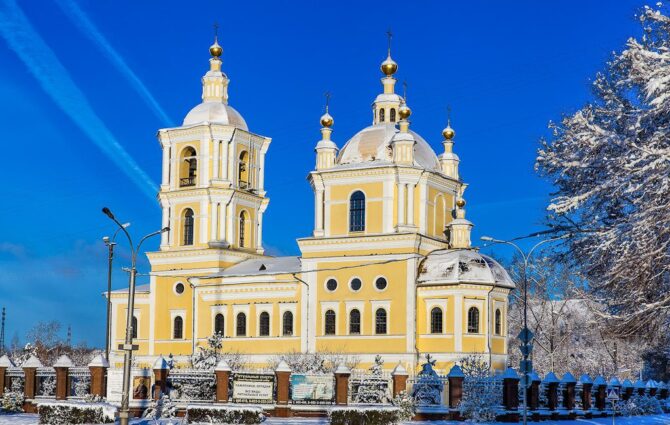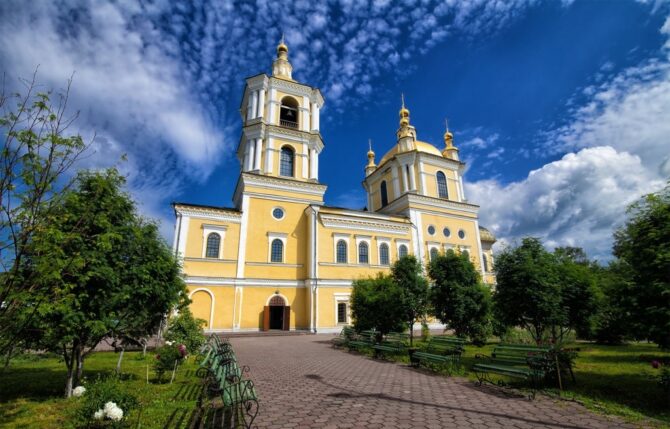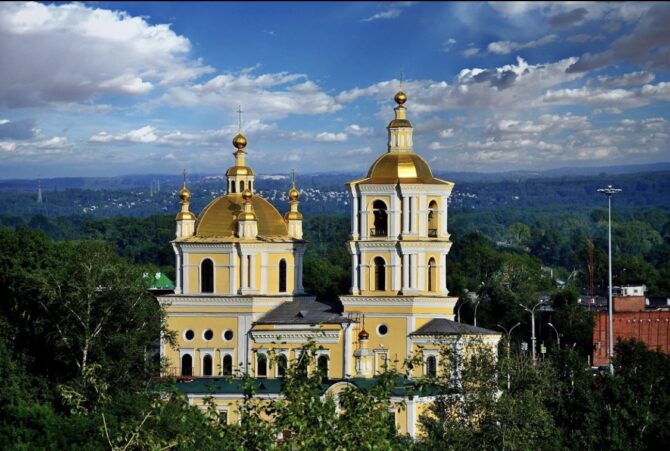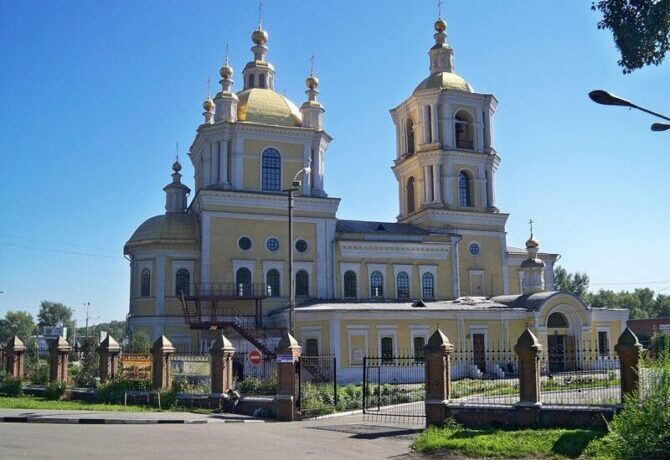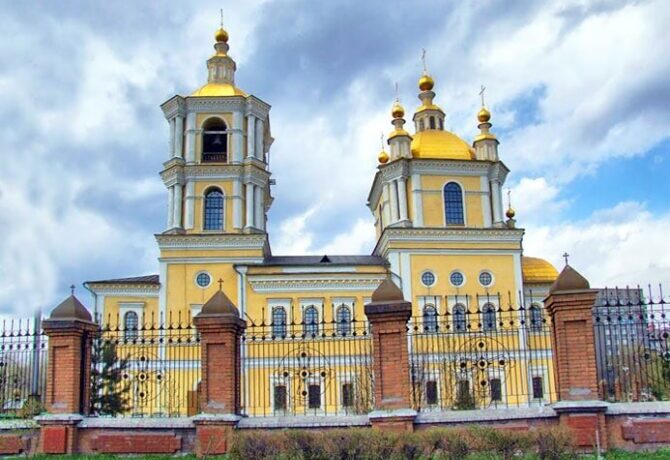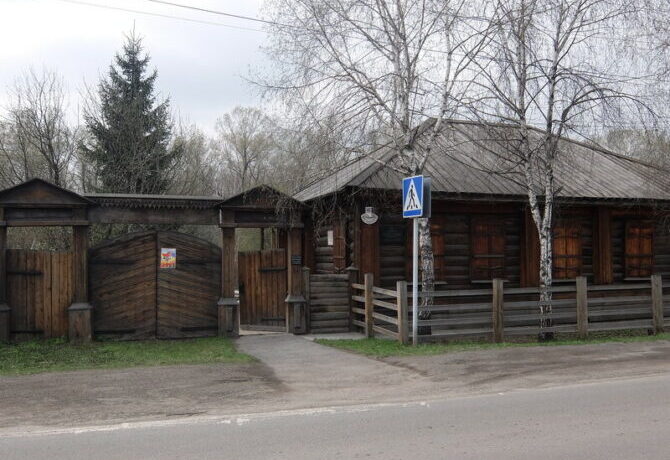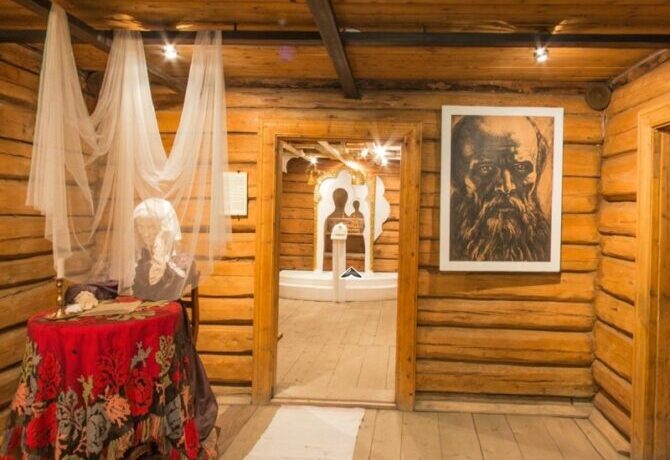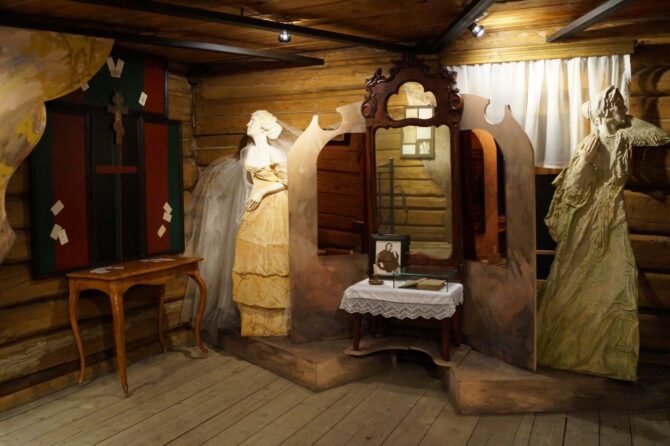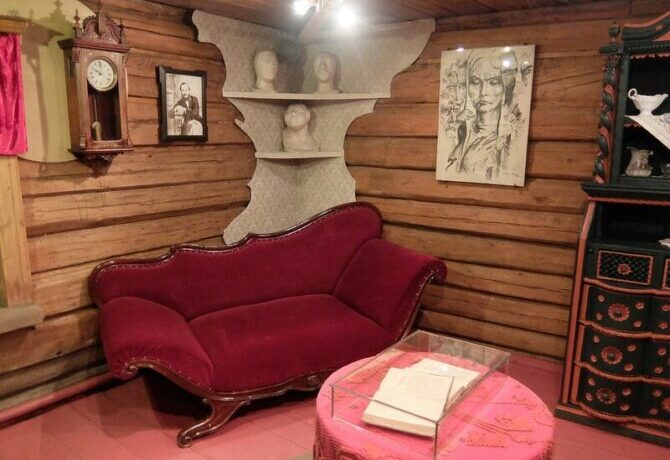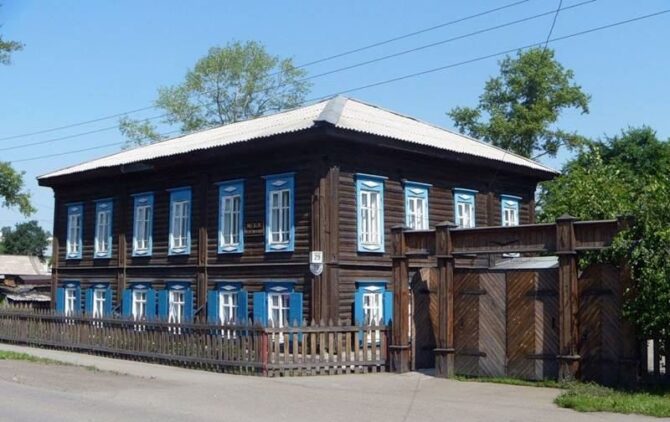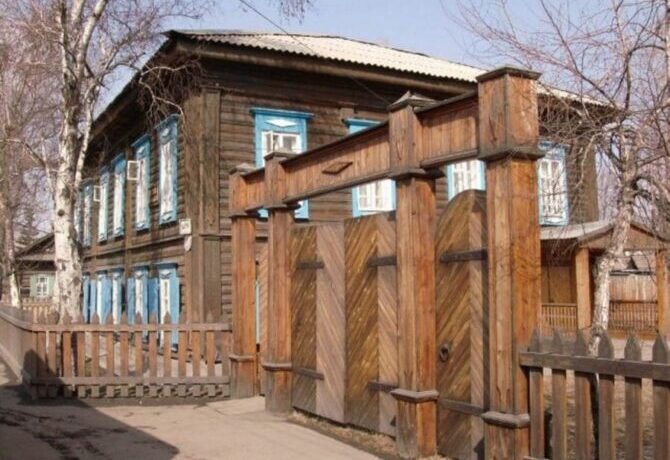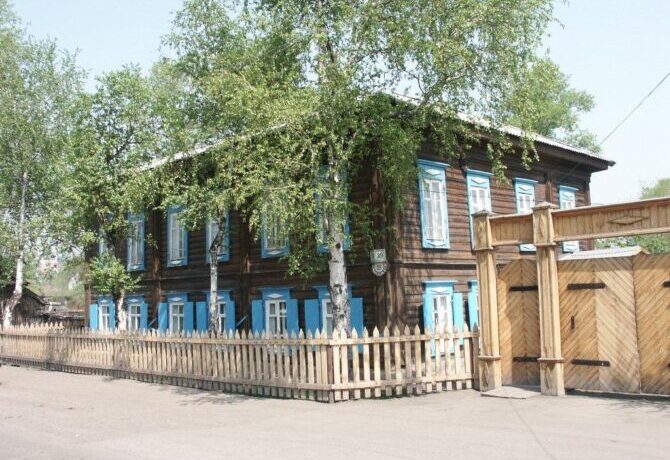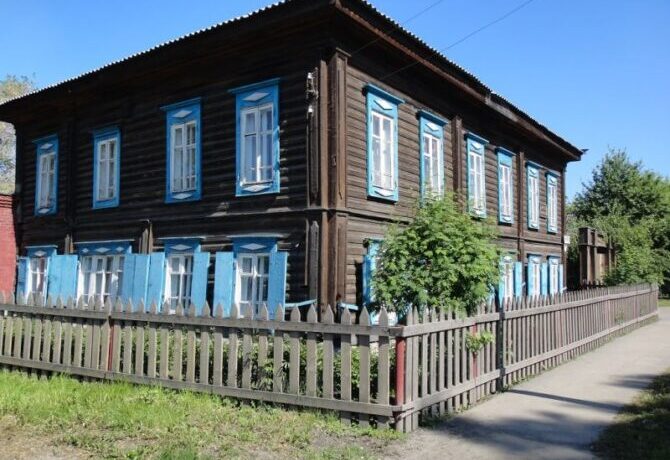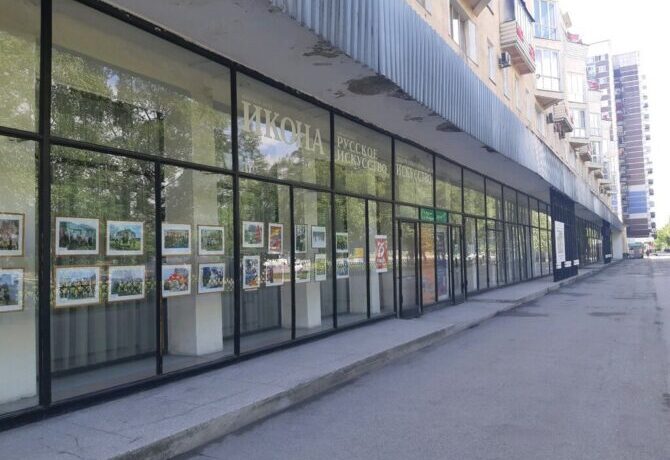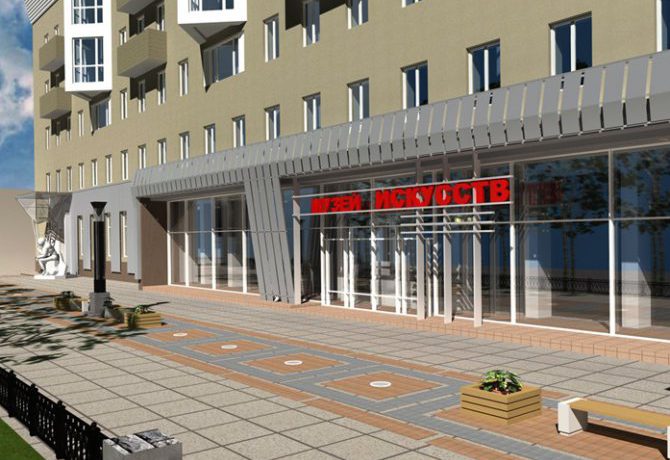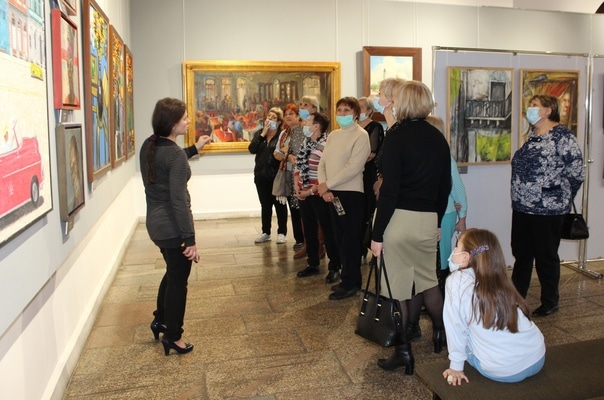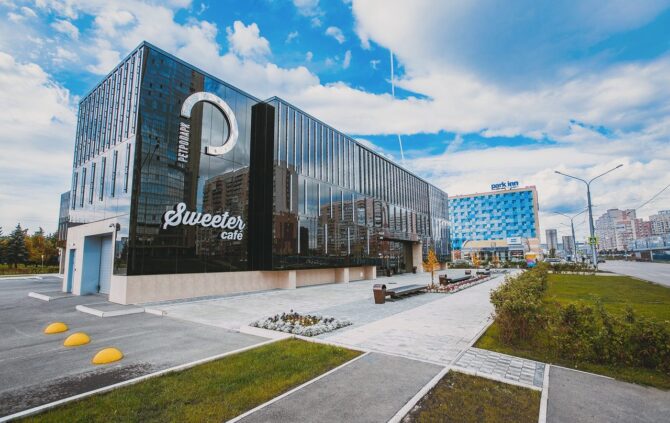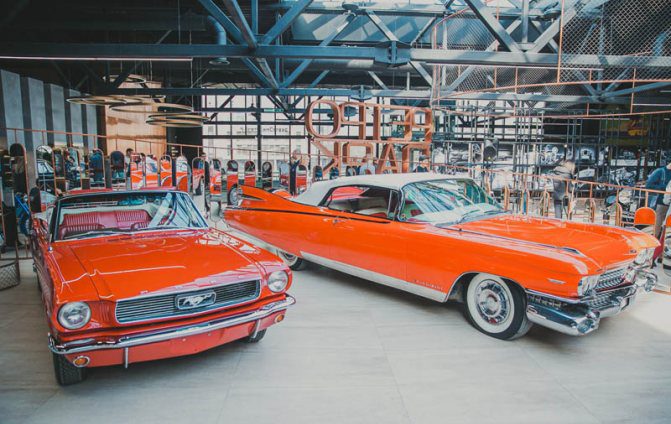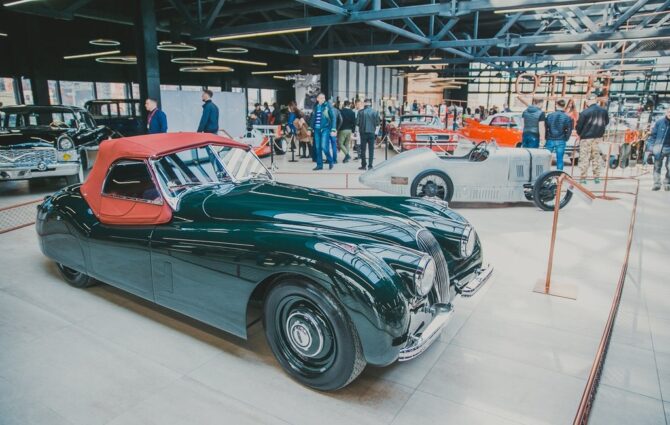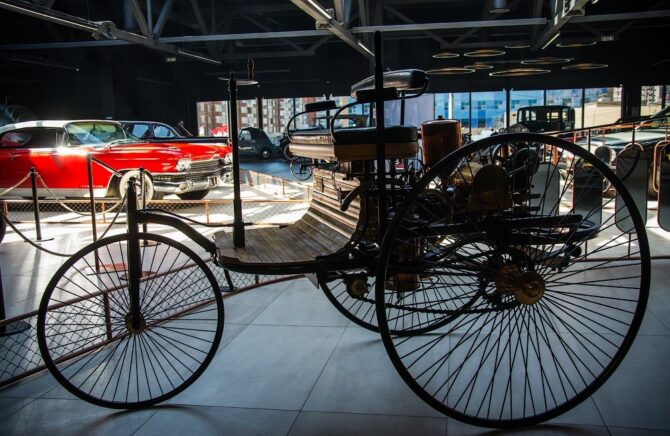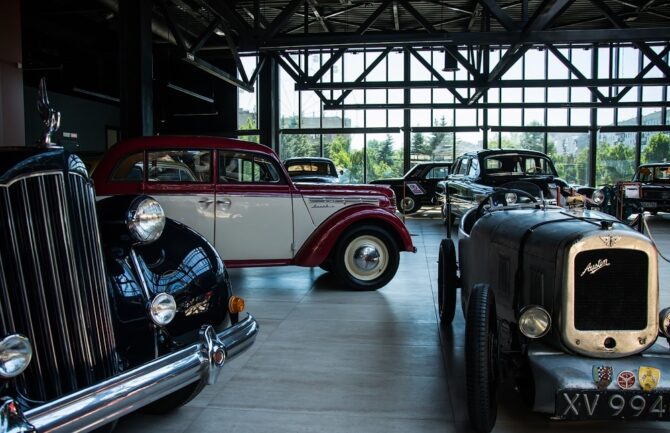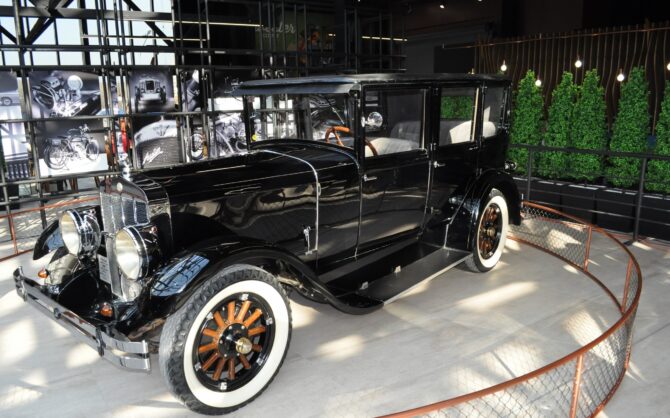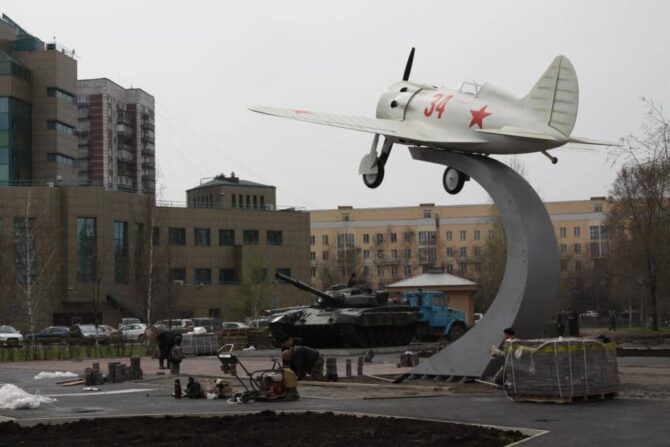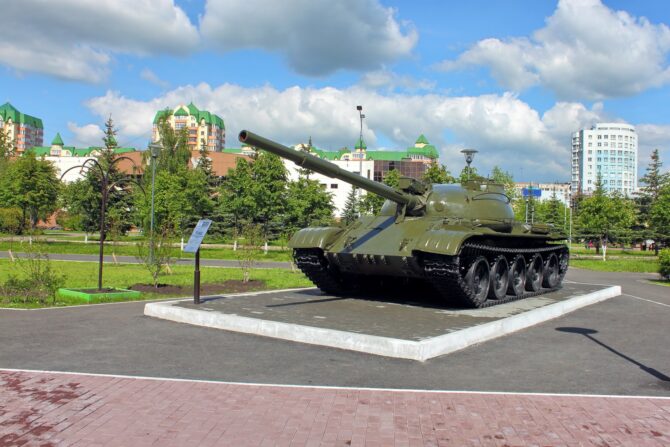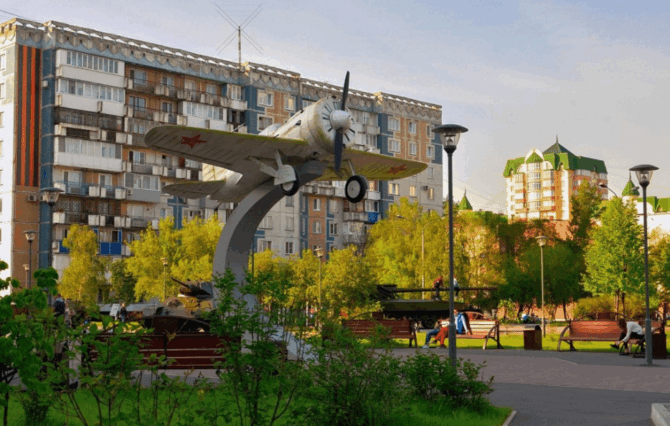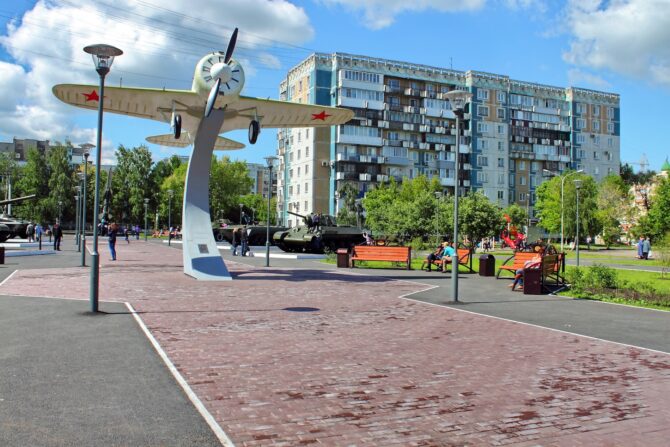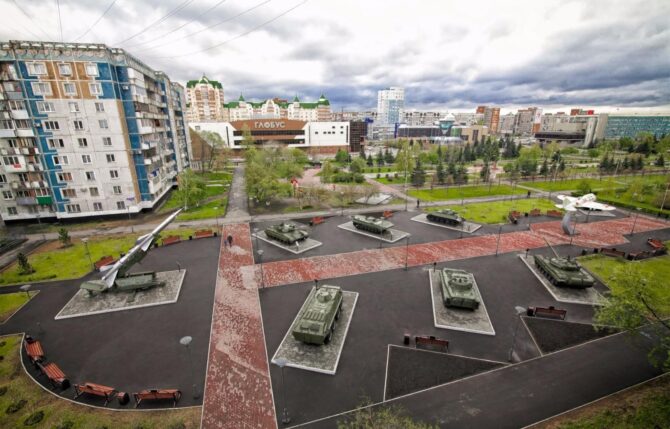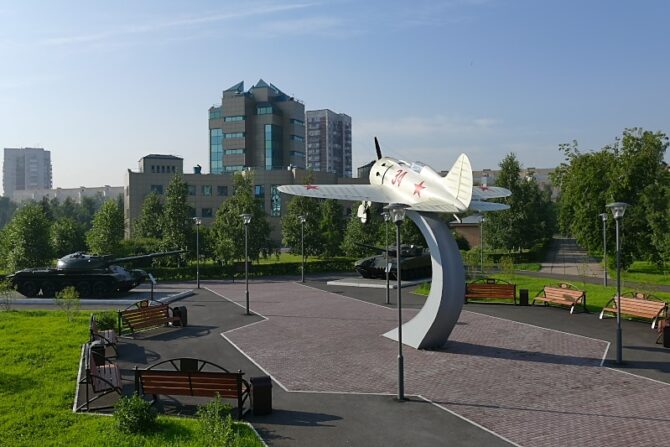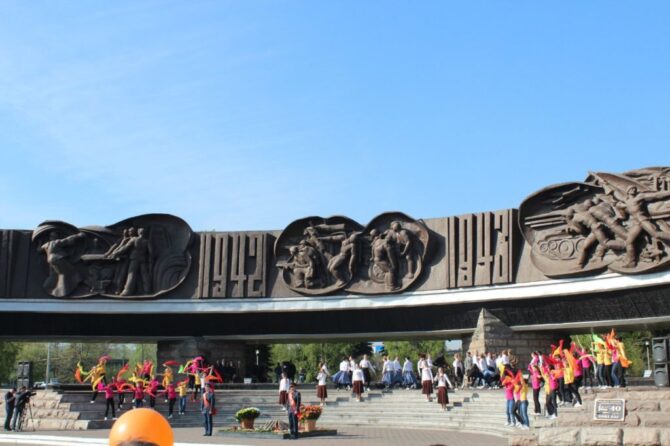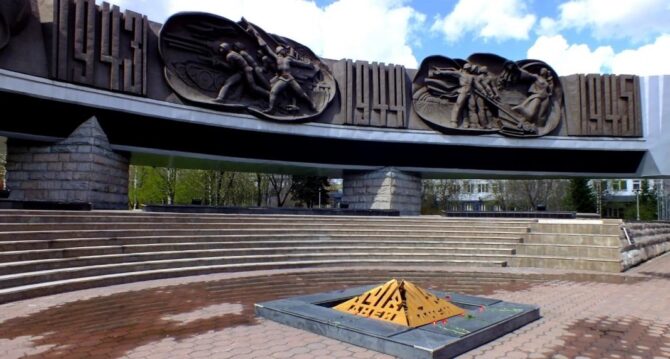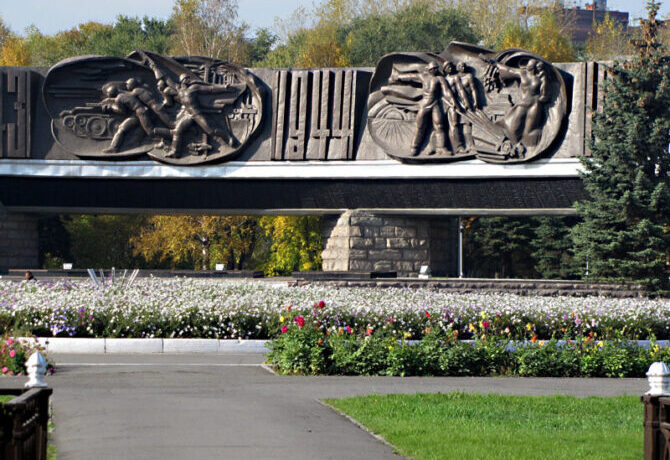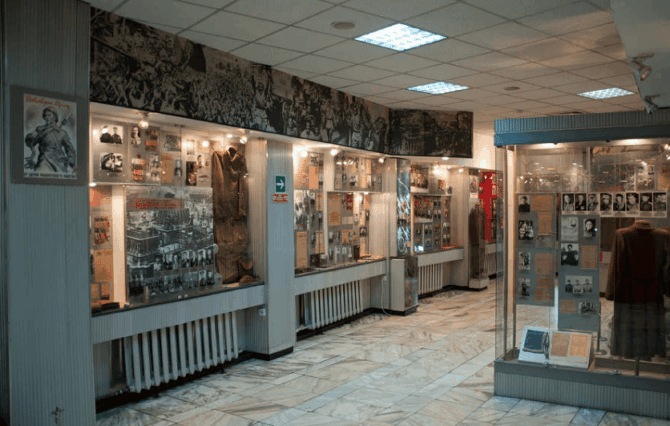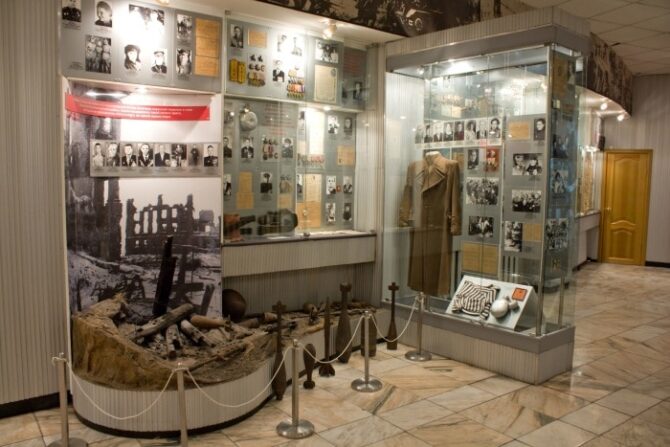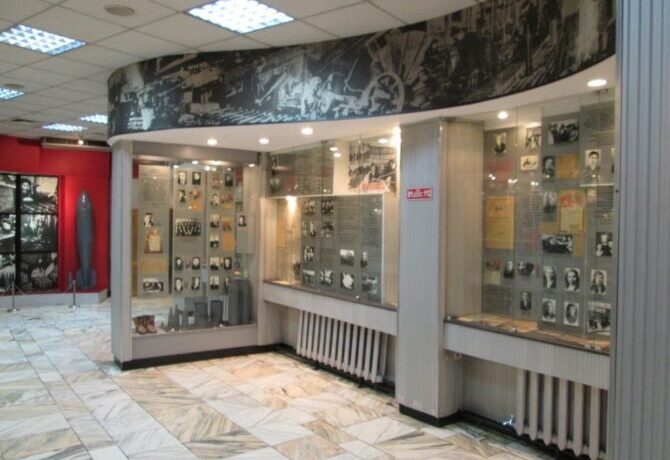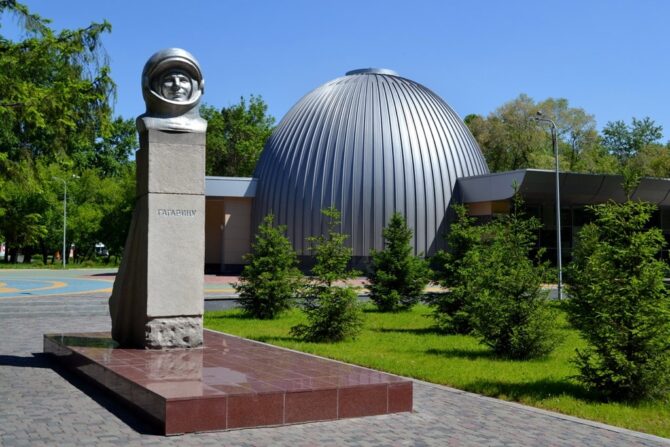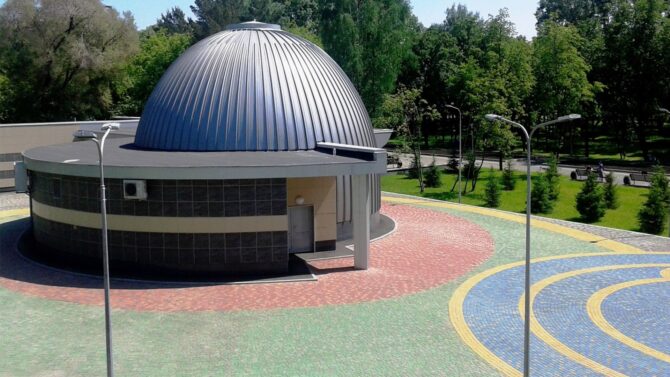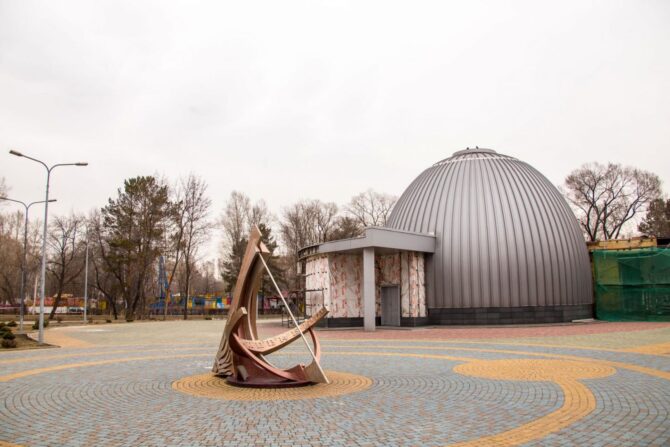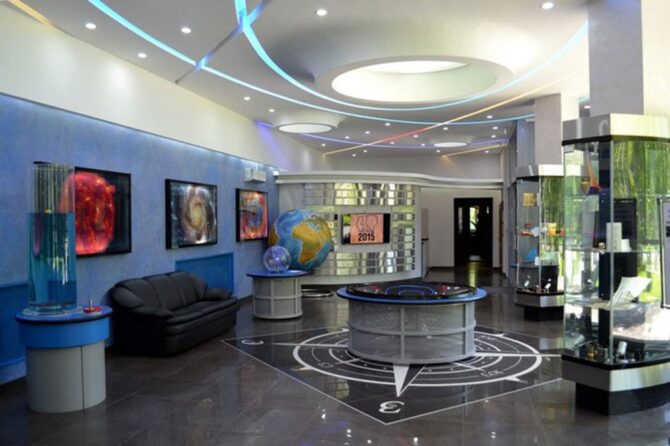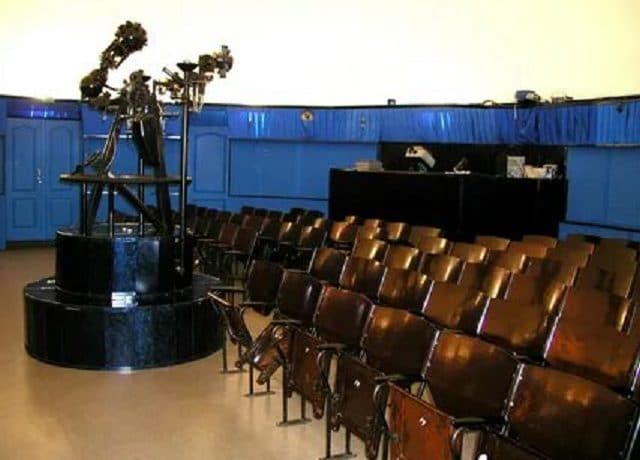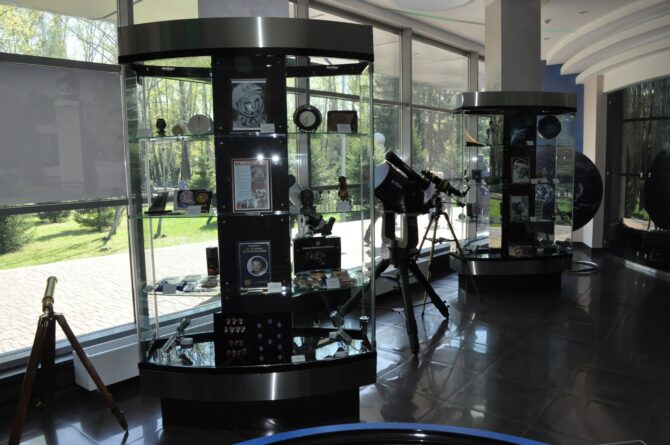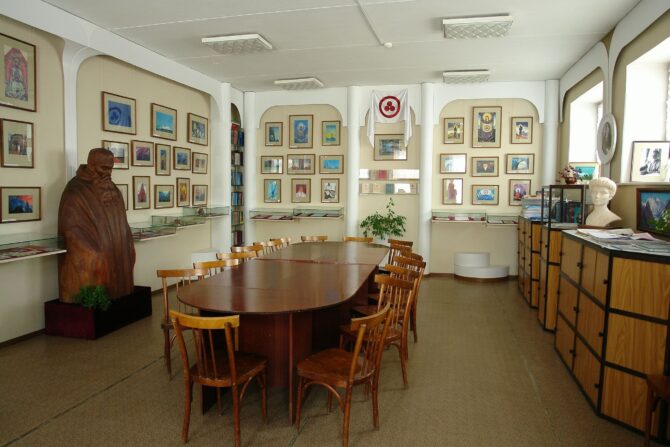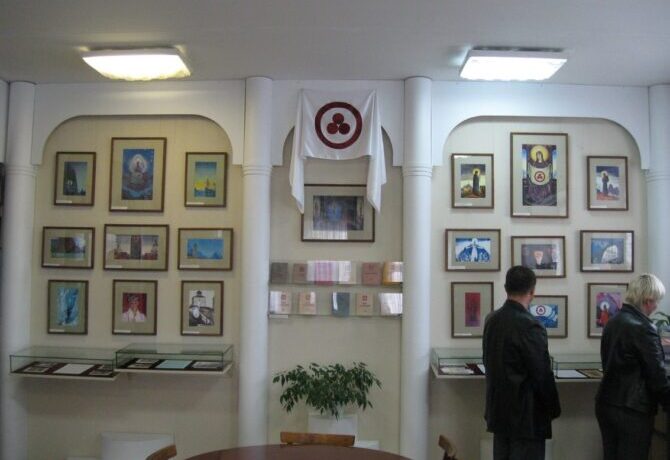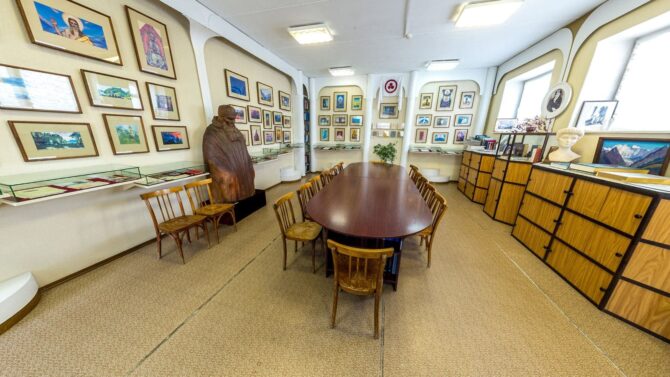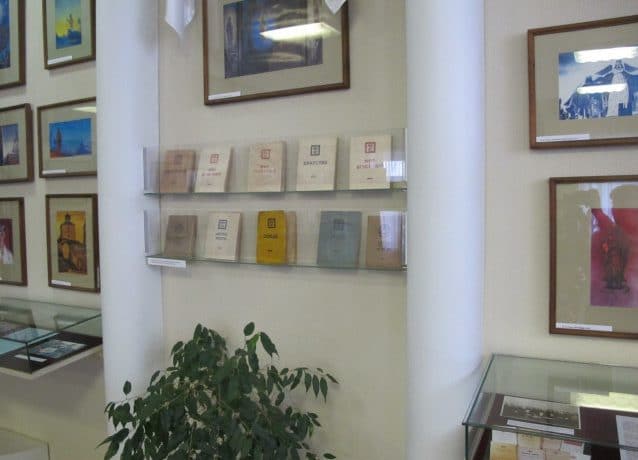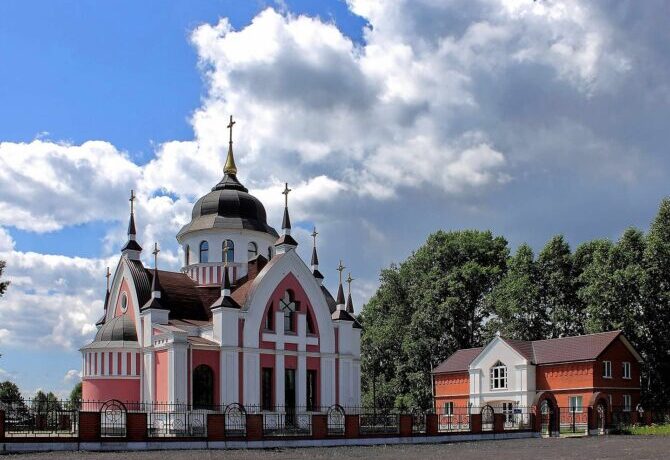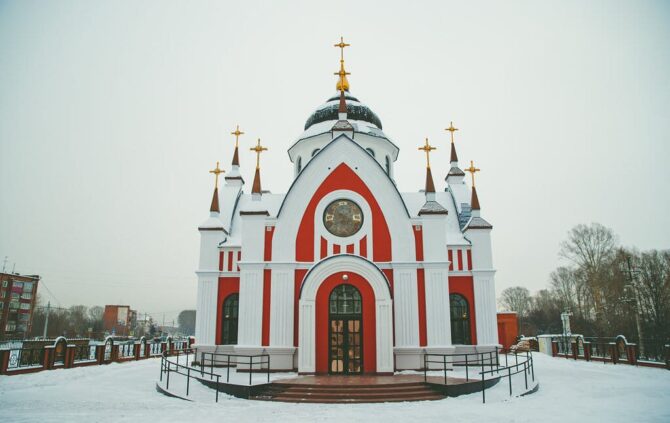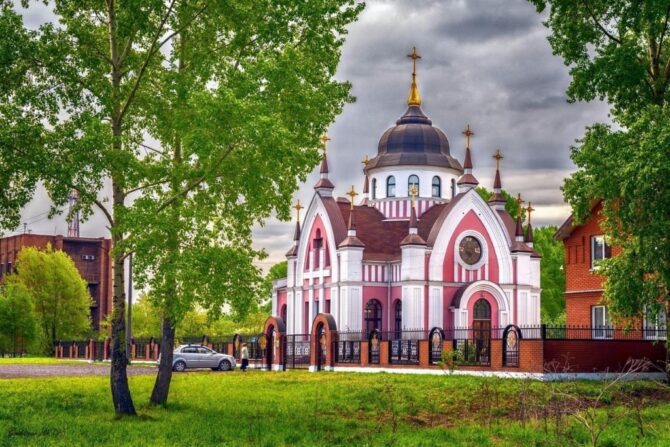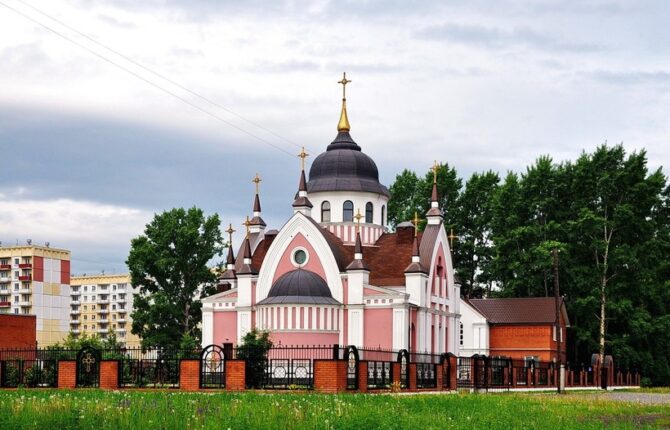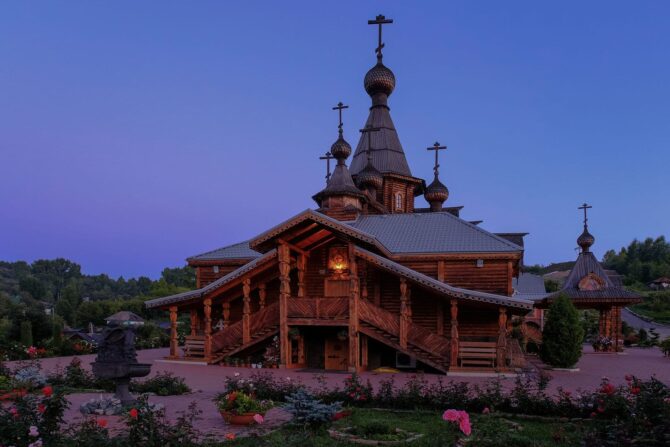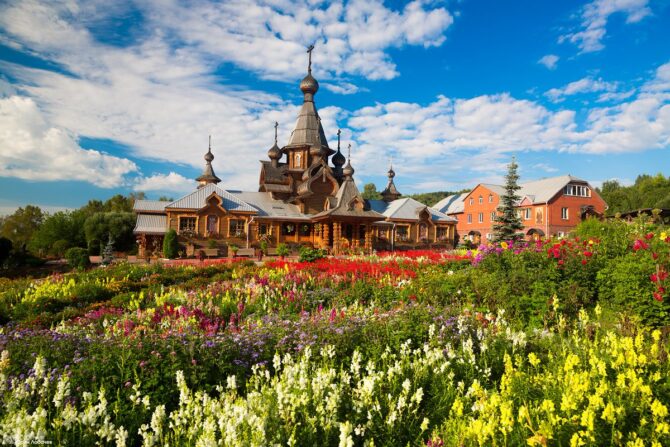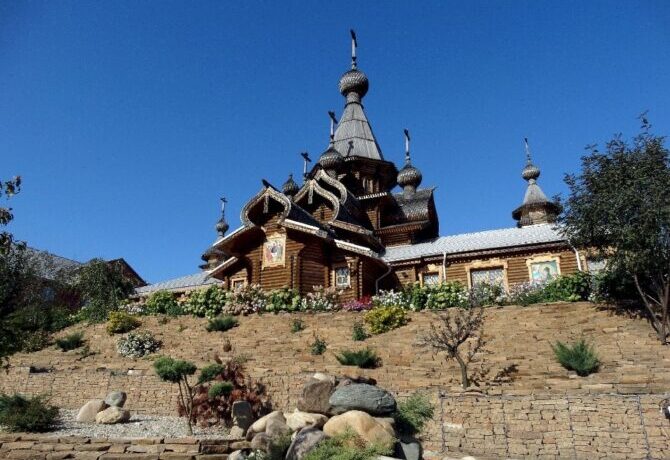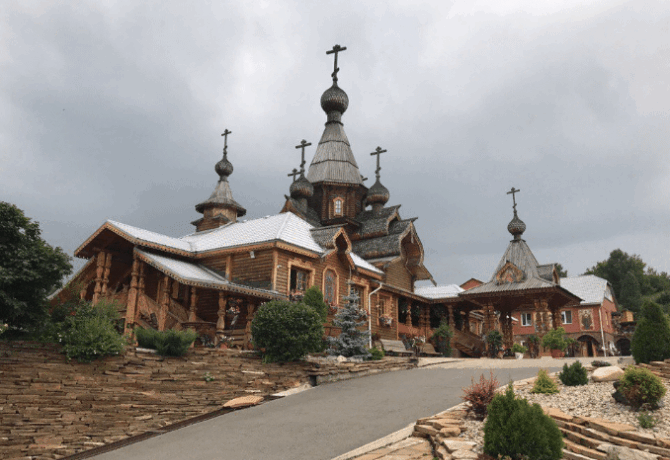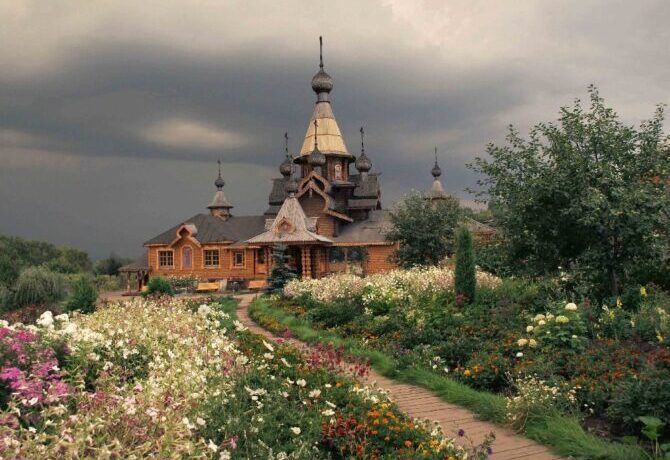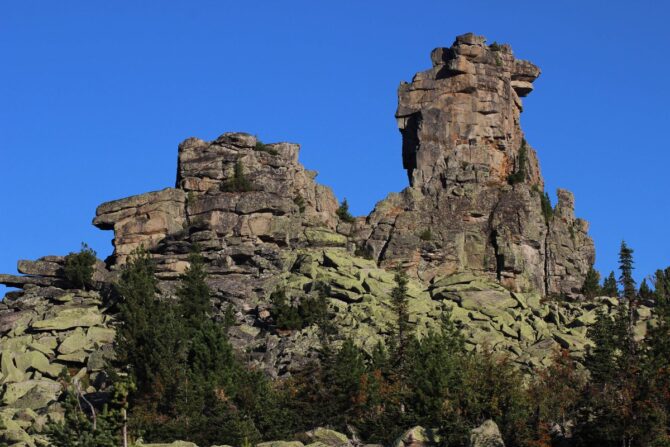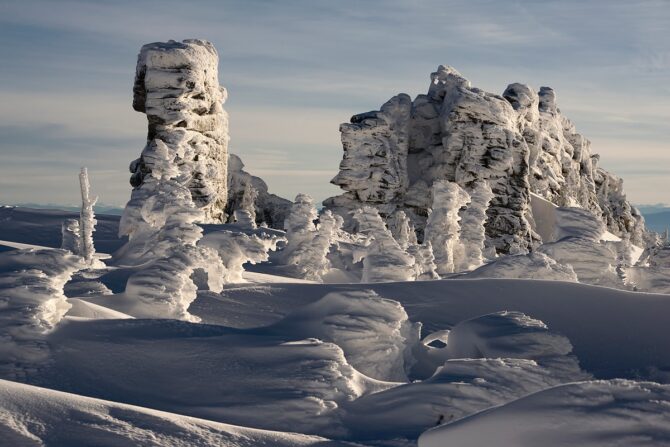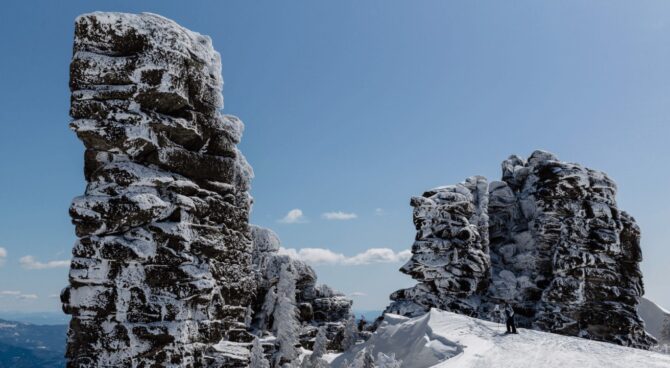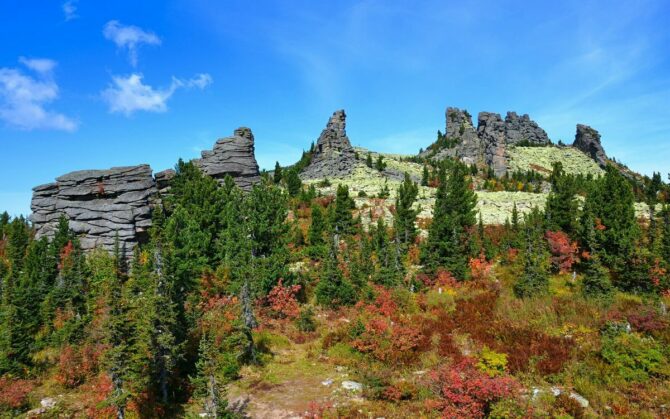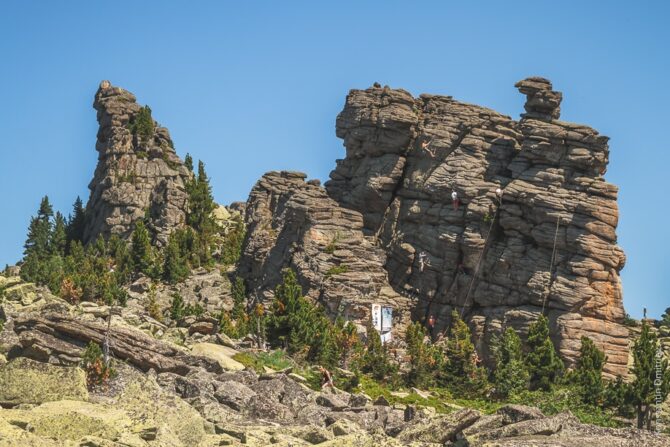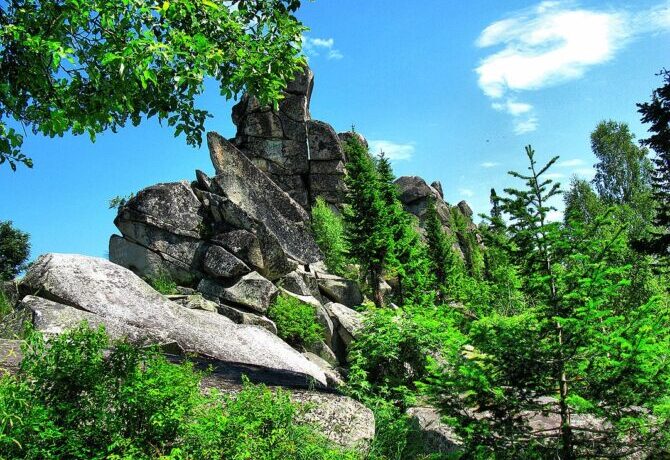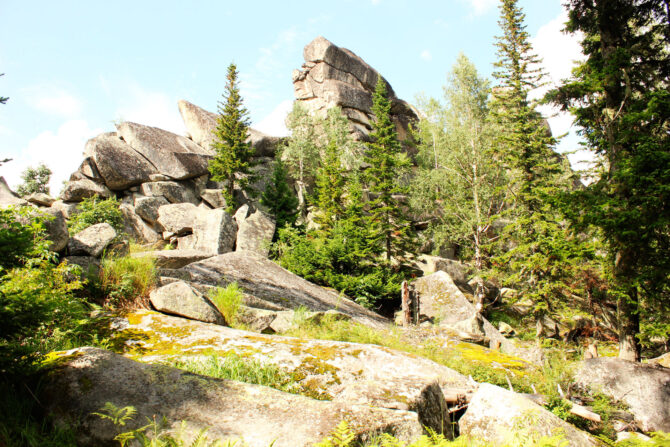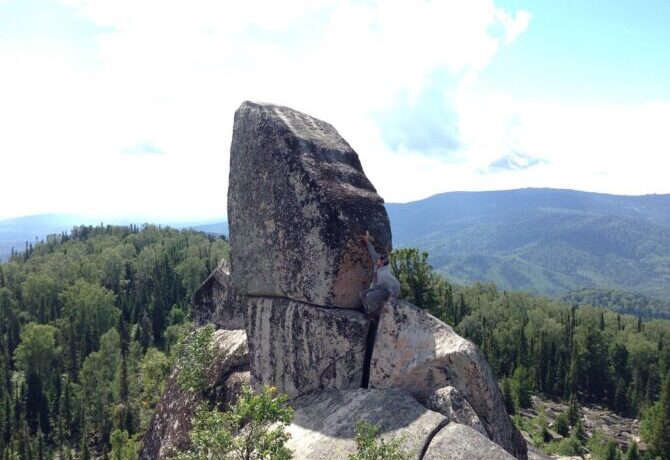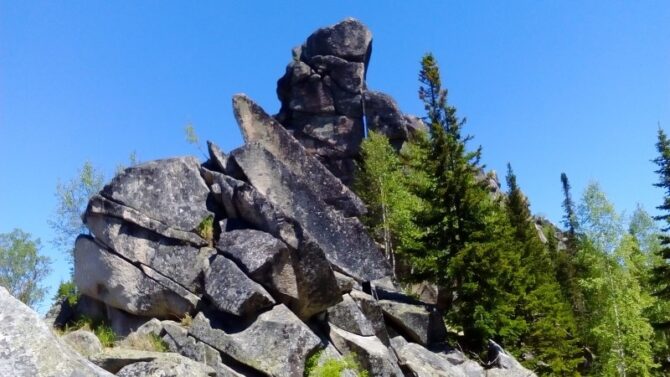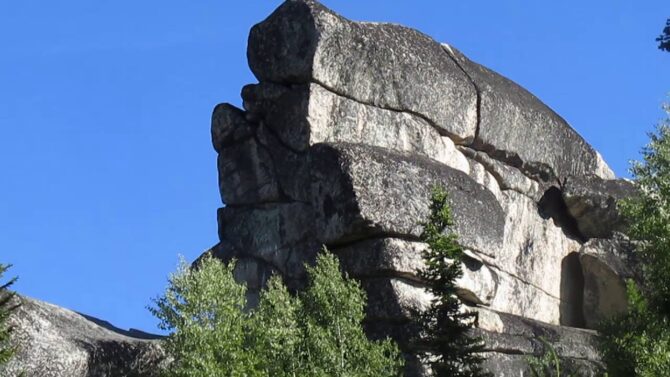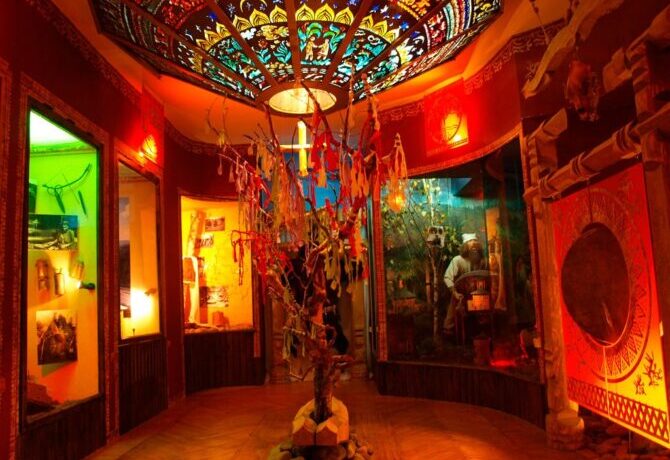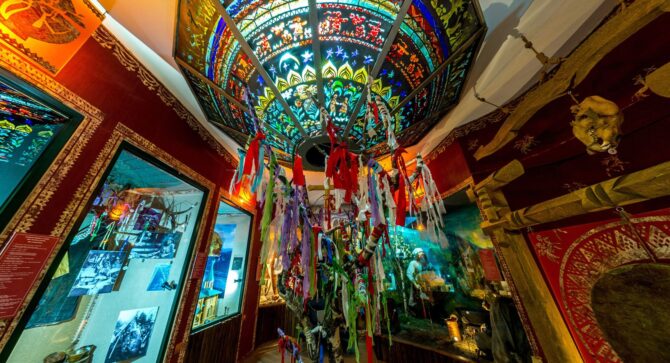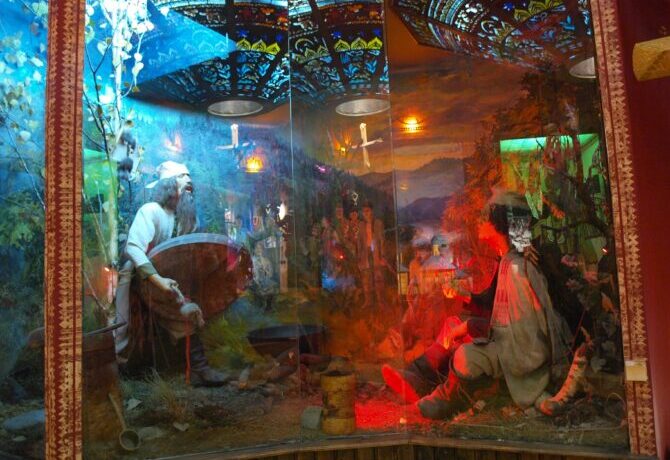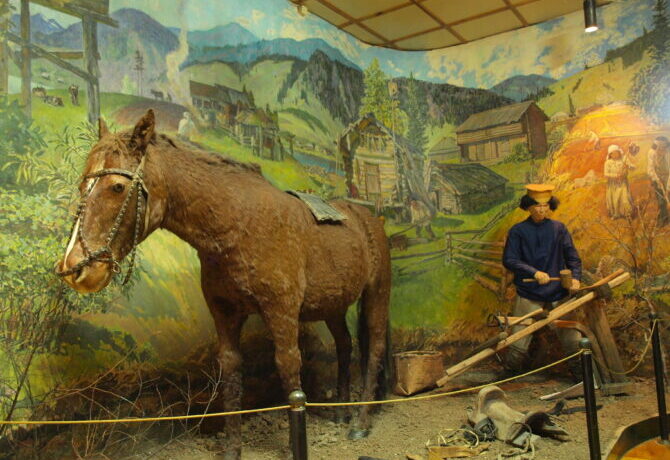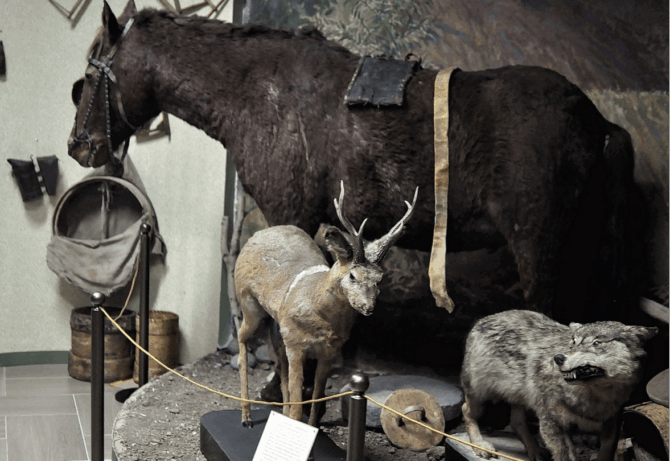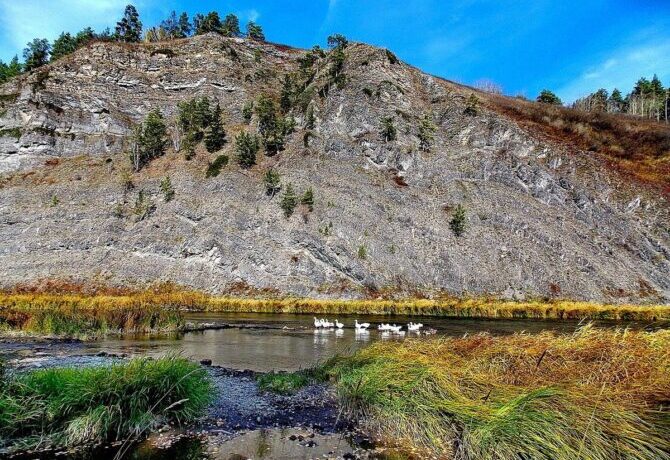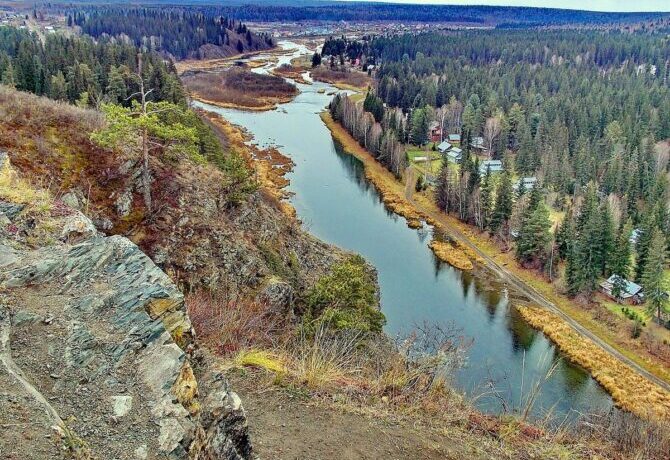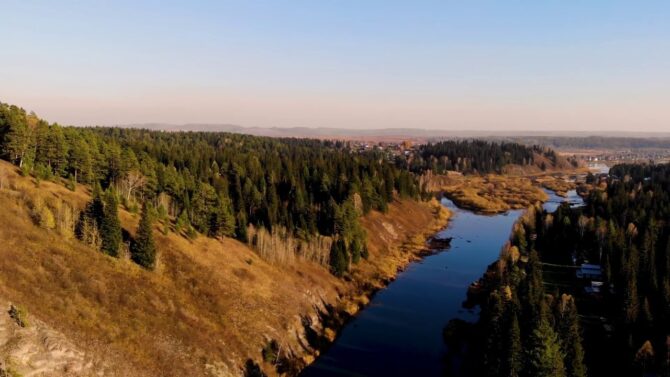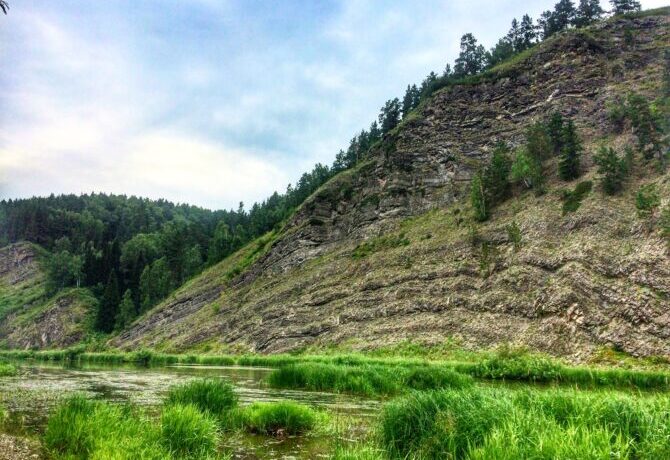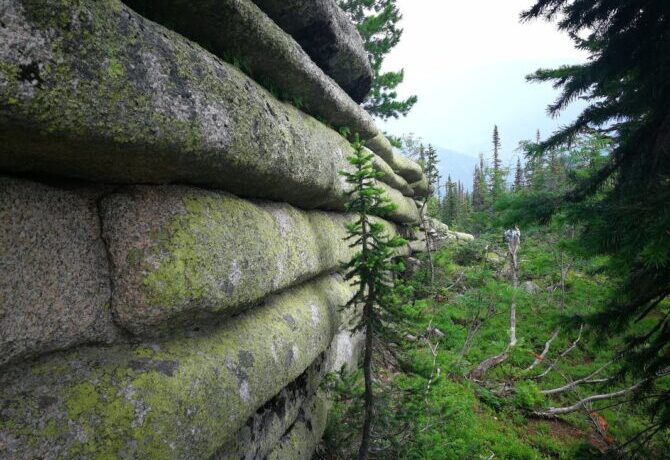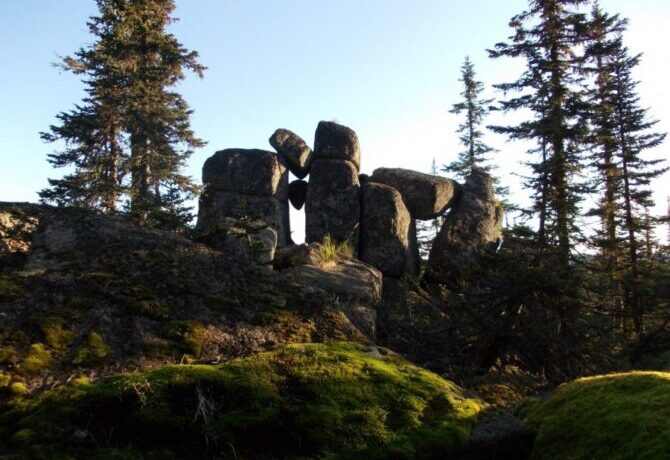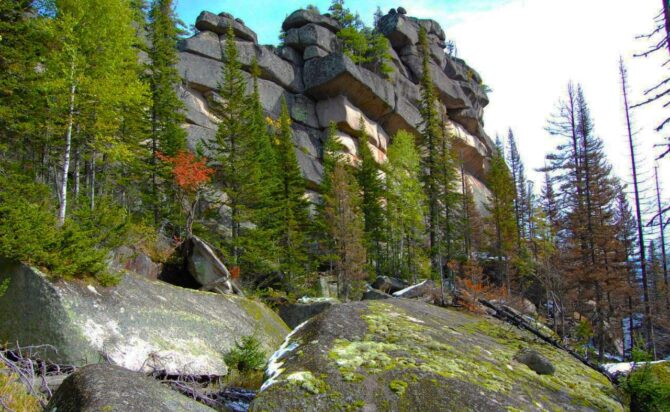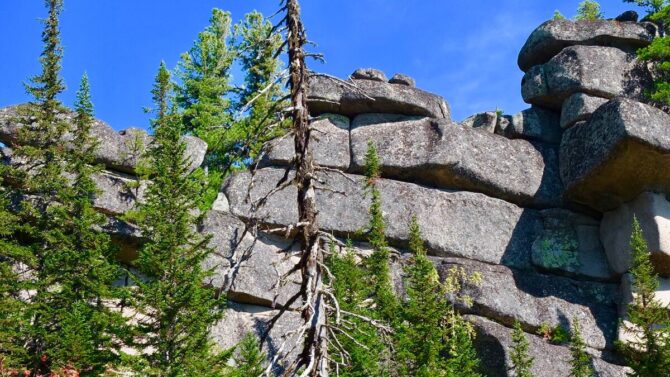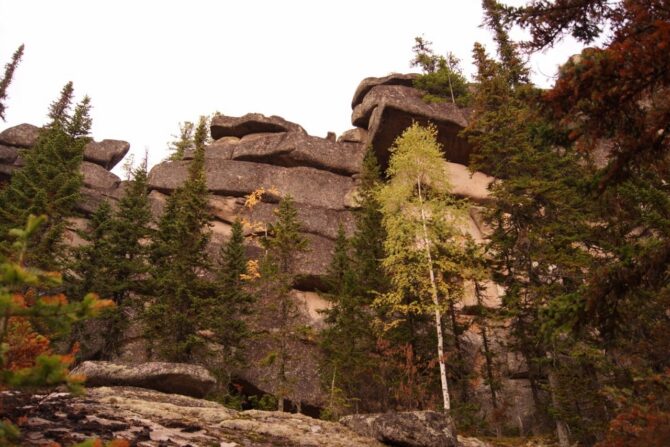Kuznetsk-Siberian was founded in 1618. Initially, a fortress was built on this place, then a fortress, around which the city grew. In the 18th and 19th centuries, Kuznetsk was known as a center of gold mining. During the Red Terror, Ivan Rogov’s gang brutalized here, whose members chopped heads, burned estates, and the Knight of St. George, the old general P.N. Putilov, sawed the body with a two-handed saw. Also, the revolutionary authorities came up with a “brilliant” idea to rename Kuznetsk to Novokuznetsk, which was executed. In the 30s, the population of the city increased by 4354%. The largest metallurgical plant was built, coal quarries were developed. Since then, Novokuznetsk has become a major industrial center with a population of about half a million people. The proletarian poet V. Mayakovsky, inspired by the story of a friend about the shock work of Kuznetskstroy, wrote the following lines: “I know – the city will be, I know – the garden blooms, When there are such people in the Soviet country!”. For this work in the city he put a monument, although V. Mayakovsky has never been to Novokuznetsk. In the 1930-1960s, a large number of buildings were built in the style of Soviet constructivism and later Art Deco. Now these houses are the architectural dominant of the center. In 2018, the city celebrated its 400th anniversary with large-scale festivities. Despite the tragic fate, in Kuznetsk there are many attractions and interesting places that are worth visiting.
- 1 Attractions Novokuznetsk on map
- 2 Historical, architectural and nature reserve
- 3 Kuznetsk Fortress
- 4 Barnaul Telescope
- 5 House of merchant E.A. Fonarev
- 6 Transfiguration Cathedral
- 7 House-Museum of F.M. Dostoevsky
- 8 House of N.S. Baikalova
- 9 Art Museum
- 10 Retropark Museum
- 11 Museum of Military Equipment
- 12 Museum of Military and Labor Glory of Metallurgists
- 13 Planetarium
- 14 People’s Museum of the Roerich Family
- 15 Cathedral of St. John Chrysostom
- 16 Church of St. John the Warrior
- 17 Camels
- 18 Rocks Spassky Palaces
- 19 Museum of Ethnography and Nature of Mountain Shoria
- 20 Blue Rocks
- 21 Megaliths of Mountain Shoria
Attractions Novokuznetsk on map
Historical, architectural and nature reserve
The territory of the reserve stretches over 20 hectares. The center of attraction is the Kuznetsk fortress and a pedestrian route to the waterfalls. Inside the fortress there is a square, benches are installed, the space around the barracks and the officer’s house is landscaped. The restoration of this historical site allowed the residents of Novokuznetsk to feel that their city has a long history. If you go from the fortress in the direction of the Verkhotom redoubt, you can not pass the crevices of the coal mine, through which a mountain stream flows, flowing down the slope of the mountain. In some places it forms small waterfalls that tourists like to visit. A bridge is thrown across the crevice, wildlife and many green spaces around. It is better to come to the reserve by taxi, otherwise you will have to climb the mountain on foot. The way from the nearest bus stop to the main entrance will be about one kilometer.
Address: Novokuznetsk, Waterfall Street/ Kremostnoy proezd
Kuznetsk Fortress
According to the results of the survey, the Kuznetsk fortress became the main symbol of the city. The construction of the first protective structures on Voznesenskaya Hill was started by decree of Emperor Paul I, who approved the project, but did not live to see its implementation. Kuznetsk was repeatedly attacked by local tribes, there was also a Chinese threat. The construction lasted about 20 years and was completed in 1820. But by that time the situation had changed, the danger had passed. After 26 years, the fortress was completely removed from the balance of the military department, and later it was reconstructed into a prison, where 100-150 prisoners were kept. Among them, the Old Believer Archbishop Savvatiy was noted. In 1919, the “Kuznetsk Prison Castle” was burned by the gang of I. Rogov, who attacked the city. Until the 1960s, the ruins of buildings and walls were torn brick by brick by locals. Then the remains of the fortress were recognized as a monument of history and architecture, began a slow restoration and restoration of the ensemble. Today, the Kuznetsk fortress is fully restored, a museum is arranged on the territory, regular excursions are held. Guns and mortars were installed, cast according to ancient drawings at the end of the 20th century. The museum presents exhibits: weapons, household items, costumes, maps, archaeological finds. From the observation deck and bastions offers a panoramic view of Novokuznetsk. On the day of the city and on other holidays in this historical place often arrange fairs, festivities, dances and costume performances.
Address: Novokuznetsk, Kremostnoy proezd, 1
Barnaul Telescope
For the first time Barnaul Tower was built in 1810. By the middle of the 20th century, only ruins remained of it. In 1998, the architects completely recreated the ensemble of the tower according to the project of V.P. Usoltsev, but without the gate temple, which was once here. In the process of construction work on the device of the new Barnaul gate had to completely destroy the remains of the ancient tower. As a result, a new object was built, which is much smaller in size and does not look at all like the original, which caused a lot of controversy and complaints.
Address: Novokuznetsk, Kuznetsk fortress, Krepostnoy proezd, 1
Alexey writes a review: “Since we have almost no ancient historical sites, the fortress looks good. It is important that it stands on the mountain and you can see the whole city, but from a height it is not very beautiful. Everything is in smoke, like in a fire – and so every day. In winter, there is nothing to do at all: guns in covers, only the main paths are cleared. In summer, you can take a walk, go to the museum, see the guns and walk to the waterfall. “
House of merchant E.A. Fonarev
The mansion is located on the street, where mostly merchants settled. In the 50s of the 19th century, the house was badly damaged by fire, after which it was bought by the merchant of the second guild Alexei Yegorovich Fonarev. The entire first floor of stone has been preserved, so the new owner completed the second floor of wood in the style of Siberian architecture of the 19th century, abundantly decorating the facades with original ornaments. During the first revolution, an underground printing house was built here. After the October coup, the house was nationalized and converted into a prison dungeon. Later there was a technical school. Today this colorful building is used as one of the museums of the Kuznetsk fortress. The following expositions are presented: “Merchant’s Room” and “Saints of the Kuznetsk Territory”. There is also a workshop for sculpting from clay, where master classes are regularly held.
Address: 19 Waterfall Street, Novokuznetsk
Transfiguration Cathedral
The story began with a chapel erected on this site in 1618. Then the first wooden temple was built here, later the second. From 1792 to 1835, a majestic stone cathedral was erected on the same prayer site. In 1919 there was a fire, after repairs served only on the first floor. In 1935, the temple was looted, the bells were broken, the crosses were destroyed. Then a school for collective farmers, later a bakery, was arranged in the building. In 1989, the ruins of the cathedral were transferred to the church. In 2004, the restoration of this oldest ensemble of Kuznetsk was completed. The temple received new wall paintings, iconostasis, marble floors with heating. At the local factory, crosses were made, gilded heads were covered. The main shrines are antique icons of the 17th-19th centuries.
Address: Novokuznetsk, Waterfall Street, 18.
Sergius1953 writes a review: “what did not survive this cathedral: it was a bakery, later a warehouse, they even wanted to turn it into an organ hall. And in the end, spirituality won: it was reborn from the ruins like a Phoenix bird, and it became even more elegant and beautiful. Fyodor Dostoevsky was married in the Odigitrievsky church, which has not been preserved. But here he also came, at that time the cathedral was the tallest building in Kuznetsk. In the late 80’s, it was even scary to walk on it. It is a pity that after the restoration the old frescoes with angels have not been preserved, but the new paintings are also beautiful. “
House-Museum of F.M. Dostoevsky
Fyodor Dostoevsky came into exile in Kuznetsk, but did not stay here for long – only 22 days. Here he married his first muse after her husband died suddenly. The main motive of the museum is interesting details from the life of the writer in Kuznetsk. The exposition is arranged in a two-level wooden house, where the first wife of the writer once rented a room. Exhibits: copies of photographs and archival documents, the diorama of old Kuznetsk, things and objects of that time. The exhibition ends with a dying portrait of Maria Dmitrievna Dostoevskaya, who died of consumption before she reached the age of 40. Also, the guide will tell about the life of people in the 19th century, the tragic love story of the writer and his first wife. In honor of Dostoevsky, the authorities in 1901 renamed Politseyskaya Street, on which this house stands, converted into a writer’s museum in 1980.
Address: Novokuznetsk, Dostoevsky street, 40.
Gard213 writes a review: “After the tour, it seemed as if I had been to a performance in the theater. The love story of a convict writer and a widow is really touching. The story is accompanied by quotations from the works and memoirs of Fyodor Dostoevsky. Visit the museum is not only fans of the writer’s work, but also all lovers of antiquity, pre-revolutionary way of life. A very atmospheric place where time has frozen and it seems that now some stranger from the 19th century will come into the room. “
House of N.S. Baikalova
The branch of the Fyodor Dostoevsky Museum is located in one of the wooden houses of the 19th century, which once belonged to the gold miner N.S. Baikalov. After retiring, Nikolai Stepanovich hanged himself in the attic of this house in 1917. In the courtyard there is a bust of Fyodor Dostoevsky by the local sculptor A.I. Bragin. Today, this building hosts interchangeable exhibitions of different painters and photographers. There is a separate hall with an exposition dedicated to the life and history of Kuznetsk in the 19th century.
Address: Novokuznetsk, Dostoevsky street, 29
Art Museum
To meet with masterpieces in the Novokuznetsk Art Museum, seven halls are allocated, located on the first floor. After the renovation, the exhibition was equipped with new equipment and good lighting. The collection includes paintings, porcelain, sculpture, and in the last hall there are antique icons. Basically, the collection consists of works by local artists of the 20th century, but there are canvases and recognized masters: I. Grabar, V. Vereshchagin, R. Falk, A. Lentulov, Z. Serebryakova. Traveling exhibitions from Moscow and other places often come: P. Picasso, N. Safronov, old Dutch, etc.
Address: Novokuznetsk, Kirov street, 62
Sennikova Anastasia writes a review: “the sophisticated museum atmosphere is quite consonant with the presented paintings. Suddenly, there are a lot of cockerels in sketches, photographs and figurines. Often exhibit the work of children from the local art school, in addition, there are author’s evenings with visiting artists. In one of the halls there are benches where you can rest a little. Museum workers look at visitors as potential thieves, can shout. Antiques are sold at the entrance. I was with a child of 7 years, he liked everything. “
Retropark Museum
Retropark in fact turned out to be an exhibition of old cars, among which there are really unique samples. For example, “Packard” like Stalin or “Cadillac Eldorado”, which the famous singer Elvis Presley bought as a gift for his mother. The first racing cars Austin and Mercedes. Armored “Zil” M.S.Gorbachev, which so loved to ride Raisa Maksimovna. Each specimen has its own amazing story. After the repair, all the exhibits are on the go and look good. The museum is located in a two-story building in the style of “hi-tech”, for visitors there is an elevator.
Address: Togliatti str., 33a
Antonych writes a review: “we thought it would be boring, but it turned out that this is a really cool museum of cars and motorcycles. The car from Formula 1 turned out to be the youngest model – 1995 release. It is better to take an audio guide, since the guide is 10 times more expensive. The machines are polished to shine and well-groomed. The new building of the European level pleasantly pleases with interiors. There is a café where you can have lunch. I recommend to all fans of retrotechnics to visit. “
Museum of Military Equipment
To the 70th anniversary of the Victory in the Second World War, an open-air museum was opened, where you can see the military equipment of those times. Real combat vehicles that participated in the battles are exhibited: the T-34 tank, the IL-16 assault aircraft, as well as different models of artillery installations, including the Katyusha. The park is well landscaped, many flower beds are planted, a children’s playground works. Older children love to climb every rocket and play “war”. This is a popular place for walks among the surrounding residents.
Address: Russia, Kemerovo region, Novokuznetsk, Zhukov Square
Museum of Military and Labor Glory of Metallurgists
Today Kuznetsk is a city of harsh metallurgists. On Victory Square you can see the colorful building of the library of the Kuznetsk Metallurgical Combine, made in the style of Soviet constructivism. Nearby are the mighty pipes of the plant and a pedestal with a T-34 battle tank. To the left of the library there is a museum of military and labor glory of Kuznetsk metallurgists. The museum building is remarkable: a long arched pavilion made of marble and granite, decorated with high reliefs on the theme of military and labor feats. The exhibition contains exhibits: personal belongings, photographs, books, etc. In total, more than 4 thousand materials related to the heroic history of the enterprise. Victory was forged here. There are no queues in this museum, so you can slowly see everything, wondering what price you had to pay for the Victory in the war. Next to the museum there is a stele and commemorative plaques with the names of the dead.
Address: Victory Square, 1.
Planetarium
It first opened its doors in 1970. After major repairs, the building was equipped with new equipment, which is also installed in the planetariums of Kaluga and Yaroslavl. Before watching the 3D film, guests can listen to an audio guide to the exhibits, which can be touched with their hands, twisted and shaken. The lecture tells interesting details about the phenomena and laws of physics, the space environment and its study, meteorites and celestial bodies. Then visitors move to the heart of the planetarium – the dome, where the equipment projects the film directly onto the spherical ceiling of the cinema hall, creating the effect of complete immersion. The subject of the video: black holes, the study of Mars, nebulae, etc. This is quite a fascinating and exciting sight. Of the cons: in order for a film session to take place, at least 15 people must be recruited. The planetarium is located in the park named after Yu.A. Gagarin – this is a favorite place for walks among citizens. The park is equipped with green squares, carousels, fountains and benches for recreation. Address: Metallurgov Avenue, 16a.
Katyushka writes a review: “after the repair, it became really interesting here. New programs for both children and adults have been added. The fresh design adds to the feeling that you are in a spaceship. I also liked the comfortable wardrobe, but there is no café. Outside, the park has also changed greatly: interesting art objects, beautiful installations, elements of improvement have appeared. “
People’s Museum of the Roerich Family
A small chamber museum of the artist Nicholas Roerich is located in one of the halls of the library named after D.S. Likhachev. There are very few exhibits: books of the Roerich family, photographs, bust, etc. The paintings of the famous artist are in the Tretyakov Gallery. In the Novokuznetsk Museum you can order a long excursion about the life and work of Nicholas Roerich, his Altai expedition, part of which was the city of Kuznetsk, at that time territorially belonging to the Altai.
Address: Novokuznetsk, Kosygina street, 35B
Cathedral of St. John Chrysostom
In one of the suburbs of Novokuznetsk, the underground Catholic community built its own church. This remake was built in 2007 in the style of mixing the Byzantine style and Catholic traditions in architecture. The service is ruled by Ukrainian Greek Catholics and emissaries of the Pope. It is noteworthy that the temple was built on Scouts Street, and it was illuminated by the Ukrainian “exarch” Stefan Menok.
Address: Novokuznetsk, Scouts street, 3.
Church of St. John the Warrior
On Zyryanovka erected a beautiful wooden church in the style of Russian northern architecture, decorated outside with lace and aspen peeves. The interior is stylized as wooden architecture of the 16th-17th centuries. The Russian spirit hovers here, despite the fact that the building was built in the 21st century. Shrines are icons and arks with the relics of the monks. Around the temple ensemble there is a pretty park with an artificial pond and swings, alpine slides and small fountains. The whole area around the church is magnificently decorated with flowers and decorations. This is a great place for photo shoots in the Orthodox style. There is a refectory with delicious pies on site. Local residents have a tradition: the wedding procession must visit the Church of the Holy Martyr John the Warrior.
Address: Novokuznetsk, Dovator street, 1.
Camels
In the famous ski resort of Sheregesh there is a ridge of rocks that look like a caravan of camels. Nearby is an operating mine and abandoned adits. Around stretches the nature of unearthly beauty. People come here to ski and enjoy the local landscapes, no wonder Sheregesh is called Siberian Switzerland. In winter, the lift works, and in summer you need to go to the rocks “Camels” in boots, since the terrain is swampy. Siberian flora grows between huge boulders: blueberries, lingonberries, ferns and other plants. Closer to the rocks, the area is completely dotted with stones covered with slippery moss. You need to walk on them carefully, as you can easily slip and break your head.
Address: Russia, Kemerovo region, Tashtagol district 52.967627, 87.910776
Andriuga P writes a review: “A week of rides has flown by in Sheregesh. In the last I got on the free-ride tour “Utuya-Camels”. Emotions really go through the roof when you rush from these unusual rocks down the chubby. There are many trails and lifts. It is better to ride in a group or in a pair, so that it is safe. Still, a chubby is not an easy matter. Christmas trees grow right in the rocks. Mountain air and endless ocean of snow – for this they come to Sheregesh. “
Rocks Spassky Palaces
Mysterious rectangles of granite are located in the south-western part of Sheregesh. They are called “Spassky palaces” or “Russian Stonehenge”. These places are suitable for eco-tourism lovers who are not waiting for something special, but simply enjoy the wildlife. The hiking trail is very picturesque – it’s a good place for a day walk or an overnight stay. At the same time, you need to be careful, because wild animals roam around and snakes crawl. The path of 50 km from the resort of Sheregesh to the “Spassky Palaces” takes about one day. You can pay for a jeep tour that lasts 5-7 hours. Wonderful views, birdsong, fresh air and climbing mysterious boulders – this is what summer tourists enjoy in Sheregesh.
Address: Russia, Kemerovo region, Tashtagol district, rocks Spassky Palaces
Museum of Ethnography and Nature of Mountain Shoria
Mountain Shoria is a region in the south of the Kemerovo region, inhabited by Russians and Shores. In Tashtagol there is a small colorful museum dedicated to the history and culture of the Shor region. The museum lacks space, but this has its own charm: dozens of exhibits fit on one square meter. The exposition includes: costumes, household items, stuffed animals, jewelry, paintings, etc. Many scenes from the life of the ancient Shors are presented. The center of attraction is the crypt of the “Kabyrzin Princess”, recreated according to the original. Its necropolis is not as rich as that of the famous Altai “Princess Ukoka”, but no less interesting. Also impressive is the corner of gold diggers, stuffed horses, shamanic rites and, of course, the Yeti – the main symbol of Mountain Shoria. When visiting the museum, it is better to book an excursion to fully experience the atmosphere of the exhibition and learn many colorful details.
Address: 4, 8 March str., Tashtagol
shor-museum.ru
Olga B writes a review: “To visit Tashtagol and not go to the museum means to make a big mistake. For a small fee, they will tell a lot of interesting information about the life, life and history of the Shor people. Were with a friend from Belgium, she liked the dioramus, the crypt of the princess and the story about the Yeti. The fresh mountain air of Tashtagol and a tour of the city added pleasant impressions. I recommend the museum!”
Blue Rocks
In the area of the village of Kostenkovo there is a regional reserve with picturesque untouched nature. The Chumysh River flows here through a canyon between the rocks, which are overgrown with moss of azure color. Villagers call them blue or blue rocks. The beautiful nature of the reserve attracts tourists and vacationers who come here with tents or rent rooms in a holiday home. There is an observation deck, which offers a breathtaking view of the river valley. Not far from the village there is an abandoned quarry, on the right bank there are several recreation centers and sanatoriums. The river is very shallow – you can easily ford or drive to the right bank.
Address: Kemerovo region, Novokuznetsk district
Megaliths of Mountain Shoria
Under Soviet rule, it was impossible to drive to this area because of the numerous checkpoints that were set up by the security services of local camps. After the collapse of the USSR, they were abolished, and the path was open. Megaliths are cyclopean stone blocks of 10-20 meters in length and up to 8 meters in height. The plates are stacked together in the form of masonry. Each of them has a smooth rectangular shape with smooth faces. There is no doubt that such an object in any case could not appear as a result of natural processes of weathering or movement of soils. Geologists compare the Shor megaliths with the pyramids of ancient Egypt or Stonehenge. Groups of researchers with equipment regularly come here, who are trying to find out the origin and other features of these structures. Similar megalithic objects are found in other countries. For example, in Peru, these are the megaliths of Puma Punku. Some “scientists” try to put forward the theory that blocks of flat rectangular shape, folded into a single symmetrical masonry, could be formed during mysterious natural processes in nature. Other researchers noticed a change in the magnetic field in the immediate vicinity of the megaliths. Something inside the phonite, but so far no one has been able to determine the source of the radiation.
Address: Kemerovo region, Mezhdurechensky city district
From Novokuznetsk it is convenient to get to the most popular ski resort in Russia in the village of Sheregesh, where there are 19 lifts and dozens of various slopes are available, the longest of which reaches a length of 3900 meters. Sheregesh is known for the long winter and the possibility of skiing between the slopes. In these places, skiers noticed traces of Bigfoot, after which a monument to this “local resident” was erected in Sheregesh. Sightseeing in Novokuznetsk can also be combined with a trip to the mysterious Mountain Shoria.

